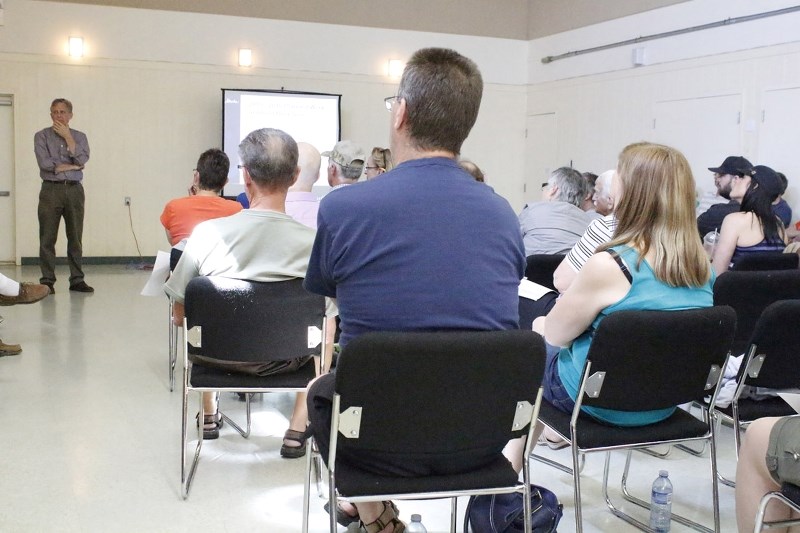The province, with the assistance of TransAlta, held an open house May 23 at Frank Wills Memorial Hall to talk to attending stakeholders about what has informed their decision-making process to continue their 2014 pilot project of using the Ghost Reservoir for flood mitigation purposes.
Some 60 stakeholders, mostly Ghost Lake boaters, residents and even business owners were in attendance to share their multitude of concerns — ranging from safety concerns about hazards in the lake with such low levels to confusion over the decision to move forward with lowering the lake even more (despite all indications pointing to a drought year) to questions about whether the lake could even be shut down for boating if levels don’t soon begin to rise, which would be at the discretion of the province.
Cam Westhead, Banff-Cochrane NDP MLA, was in attendance and said he would bring forward the concerns of his constituents to the table.
Prior to 2014, the average depth at this time of year was around 1,189 meters - rising to just over 1,191 m as the season went on. Last year, the level was dropped to 1187 m to create further capacity in the event of a repeat of the epic 2013 June flood.
This year, the new low is 1,184.2 m — so low that Mike Weinert of Ghost Lake Recreations is concerned for any boaters on the lake currently (due to topography hazards) and said that the water levels are too low (at 1,185.5 m the morning of May 23) to launch a boat into the water or to retrieve a watercraft back out.
One man even remarked on the potential ‘catastrophe’ of how the RCMP would get their watercraft into the lake to perform a rescue operation at this point.
The province and TransAlta officials discussed the data that they use to inform their decision-making process — including historical weather models, current conditions (constant monitoring), snow pack conditions, soil and most importantly rainfall.
According to Environment Canada, all months since December 2014 show precipitation averages are down around 50 per cent each month; their models indicate a dry spring through summer.
The province and TransAlta will monitor the conditions on the lake through the remainder of May and into June to determine whether the flood risk is low enough to begin letting the water levels begin to rise.
At this point, it would take around 10 days to fill the lake level (back to around 1,189 m). This time frame would extend as a dry season progresses and water flows decrease.
The province maintains that the creation of 65 million cubic meters of capacity is ideal to mitigate a flood risk.
Many in attendance at the open house argued that this capacity would only serve to ‘hold back the flood gates’ for a period of several hours in the event of the return of a ‘100-year event’ as the 2013 flood has been dubbed.
Many also expressed concerns that those who have enjoyed Ghost Lake for years as boaters, residents (one woman said her well is dry for the first time since 1967) and business owners (Weinert’s business is down 40 per cent, as he is unable to rent out dock and mooring slips) are paying the price for the government’s ‘overreaction’ to worst-case scenarios.



